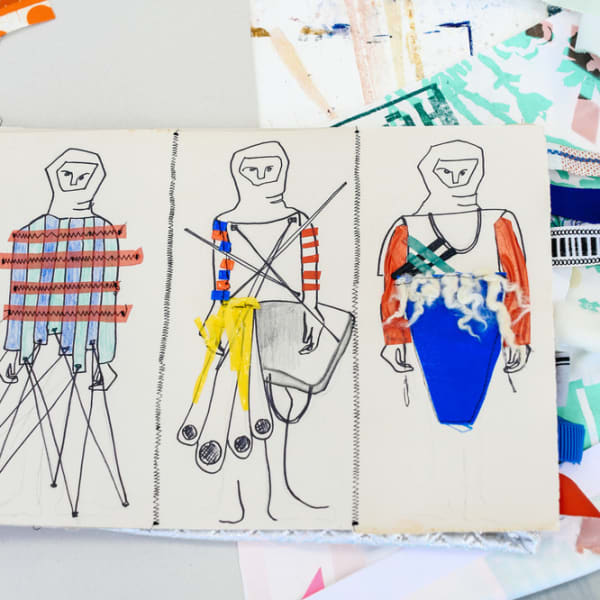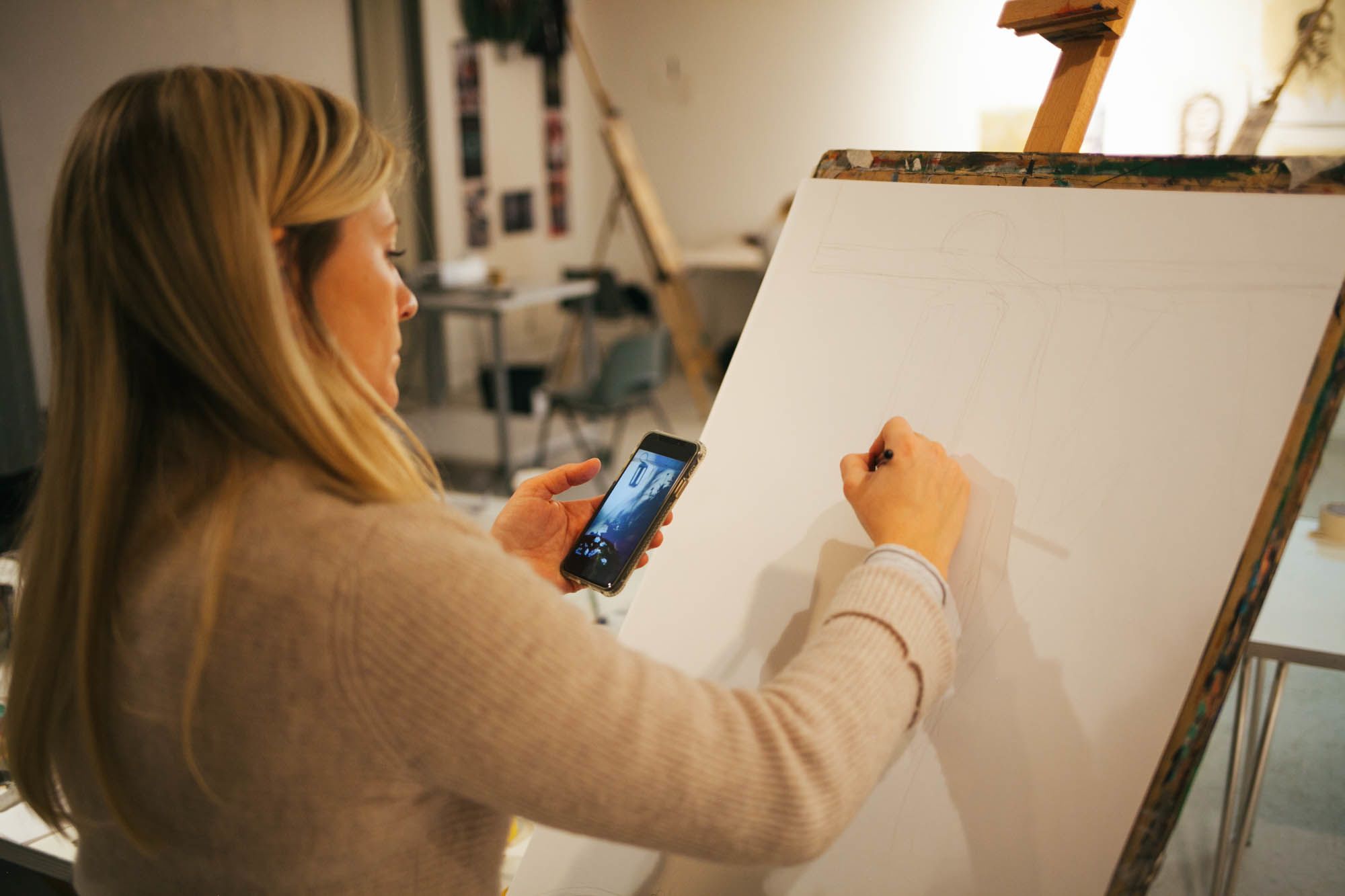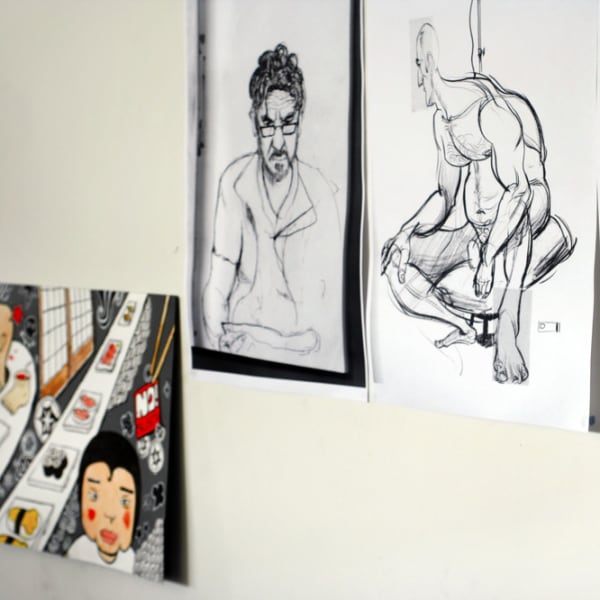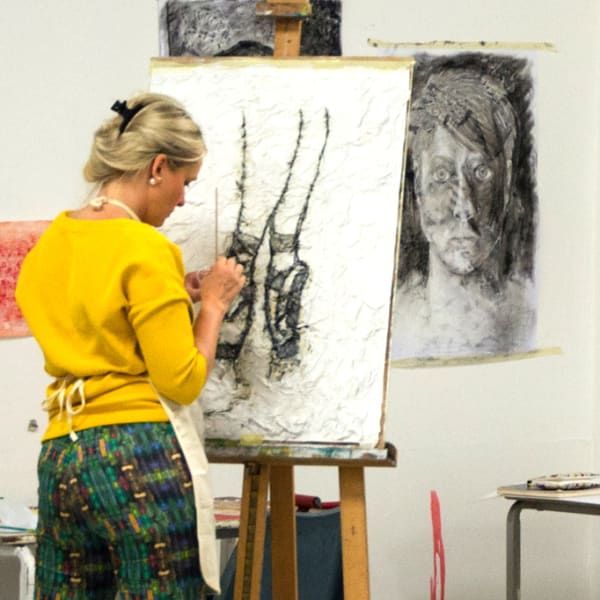
What to draw as a beginner

- Written byCarys Thomas
- Published date 03 February 2022

Studies have shown that finding time for drawing can have a positive impact on mental health and wellbeing by relieving stress and anxiety and boosting confidence. It can also be a great way to process your emotions by helping you take time to pause and reflect. Take a look at our guide on how art and creativity can improve health and wellbeing.
If you’re a beginner and want to improve your drawing skills, it can be hard to know where to start. You may feel intimidated by the blank page in front of you and wonder exactly what you should draw or focus your attention on.
We've compiled this guide to give you some practical tips on how to build your confidence and improve your skills as a beginner using a few quick exercises. With a few simple tricks and techniques, you’ll be drawing in no time. Be kind to yourself and remember everyone has to start somewhere!
Our guide on how to become an illustrator also has some useful practical advice from professional artists that may be helpful if you’re looking to take your drawing to the next level.
1# Focus on the subject
If you’ve not tried this exercise before, it may feel a little strange or counterintuitive. The technique, known as blind contour drawing, involves focusing all your attention on the subject you are drawing, rather than on the paper in front of you. By not looking at your work as you draw, you should find that you feel less pressure to produce a perfect piece. Try to keep your eye fixed on the subject at all times, and don’t be tempted to glance down at any point.
The outcome is less important with this exercise as it’s all about training your eye and hand to work together. You may find it easier to concentrate while you draw as you won’t be fixated on correcting details and your attention will be on the drawing process rather than the end result. Drawing in this way can help to improve your sense of proportion and spatial recognition and should you help you draw more realistically if you practice regularly.
2# Experiment
Professional artist and UAL short course tutor, Ilga Leimanis, recommends experimenting with different ways of holding your pencil or pen as a way to improve your drawing process. Let your pencil or pen rest naturally between your fingers, as though it is an extension of your hand.
"Lift your hand off the page and draw with your entire arm from the shoulder. Start by drawing lines and shapes and try to use the gesture of your hand to get around a circle a few times, quickly, not slowly. It’s all about the gesture" says Ilga.
3# Loosen up
When you first start drawing, you may find that the muscles in your hand are quite tense as you try to maintain control over your pen or pencil. Ilga says this is common, and notes that it is important to practice loosening your hand; "most people starting to draw will try to stay very much in control of their lines, but a few quick loosening-up exercises will be great for advancing your confidence and skills."
One way to loosen up is to try limiting the amount of time you take to finish a drawing. Think about setting a timer, perhaps for just a minute or two, and use the time to try some quick drawing exercises. You may prefer to use newsprint or some scrap paper that can be thrown away afterwards. Using a material like charcoal will allow you to practice your mark-making and can be a great way to practice softening different elements and experimenting with tone.
4# Try one-line drawing
This playful exercise is a fun way to boost your confidence and produce unique, free-flowing drawings. The technique follows one simple rule; once your pencil touches the paper, it can’t be lifted until the drawing is complete. The finished drawing will feature one continuous line that is connected in every way.
One-line drawings are increasingly popular and allow for a level of freedom and playfulness that is not easy to replicate using other drawing techniques.
Pablo Picasso famously used this technique in his work, and many of his drawings feature a powerful, uninterrupted line that can be seen to create impact. Picasso often focused on reducing a complicated image or shape, like an animal or face, into a single line to create a dramatic effect.
5# Change perspective
Getting to grips with perspective can be difficult when you first start drawing. Learning about the principles of perspective is important as it will enable you to create the illusion of a 3D space on a 2D surface.
One way to improve your skills is to draw a subject from different perspectives. Begin by picking an object to focus on and turn it around to view it from all angles. Rather than choosing the most obvious or simple view of the object, challenge yourself and pick a different perspective that you wouldn’t normally expect to see it in. Try sketching it from this perspective for a timed period, then switch to another angle and repeat the process. This will help you to approach challenging subjects with more confidence and should add interest to your work.
Remember, it takes practice to improve your drawing skills. Try to set aside some time every day to draw without distraction, even if it’s just a few minutes on the way to work. By drawing more often, you’ll find that you will learn to notice things in a way that you may not have before, and over time, you’ll be able to produce clearer marks that accurately reflect what you see around you.
If you’re looking to take the next step in your creative practice, study a new technique or develop your drawing skills further, you may be interested in our drawing short courses.

